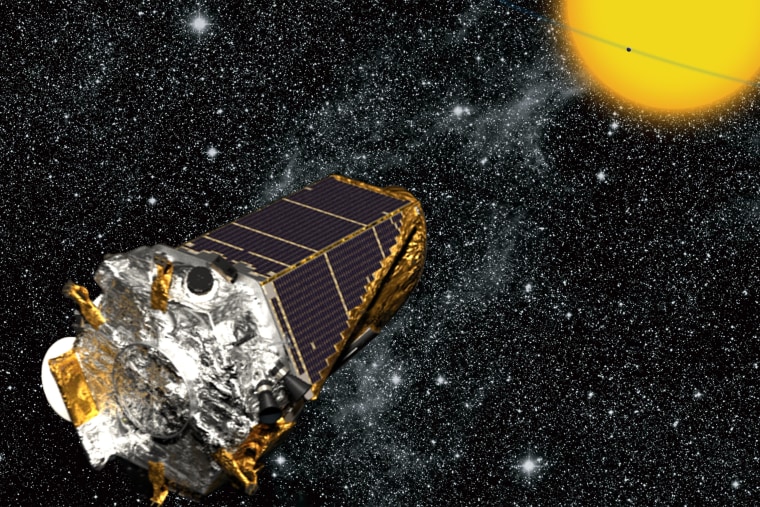Could new findings around a distant star point to an advanced alien civilization?
While it's a possibility that some scientists are considering, the chances are very high that we haven't stumbled upon extraterrestrials.
Researchers might be striking a note of caution, but buzz over the story went into hyperspeed as people on social media unleashed a steady stream of alien jokes.
So what did astronomers find?
In 2011, amateur researchers from Planet Hunters discovered something strange. The light patterns coming from KIC 8462852, a star roughly 1,500 light years away, were highly unusual.
The readings from the Kepler Space Telescope they were looking at seemed to suggest a star densely surrounded by matter. That is common for young stars, which are often surrounded debris and dust early in their lives. KIC 8462852, however, seems to be a mature star and the telescope didn't pick up the infrared radiation usually given off by stars surrounded by that kind of dust.
One possible cause of the strange dips in light: alien-built "transiting megastructures" passing in front of the star.
The researchers have stressed to the press that this is a very remote possibility. That hasn't stopped people from imagining a star system with advanced aliens piloting the Death Star and Imperial Star Destroyers around their home world.
OK, so that is definitely not what's going on here. But SETI (search for extraterrestrial intelligence) researchers are always looking for outliers, and this definitely counts as a unique find. Now astronomers Jason Wright and Tabetha Boyajian (from Penn State and Yale, respectively) want to take the next step by looking for radio waves from the star that might indicate life.
Related:Online Amateurs Feed Their Science and History Addictions
"I think it's worthwhile for people to point radio telescopes at the star and check," Wright told NBC News. "It's the best SETI target we have right now."
Exciting, yes. But in no way have the researchers claimed to have found alien life. They have just found something unusual that they can't completely explain.
Boyajian, who co-authored a recently released study on the star, has come up with a less fantastic explanation.
Exocomets
This is the "most promising" theory, according to Boyajian's study. The idea is that another star could have passed near KIC 8462852 and disrupted a cloud of comets similar to the Oort cloud that surrounds our own solar system.
That could "trigger a barrage of bodies into the vicinity of the host star," the study said, and that might have caused the strange readings.
When a planet crosses a star, it has a regular shape and orbit that can be deduced from the dimming starlight. Wright likens it to someone circling a block on a bicycle — if they have a consistent speed and route, the shadow that bicyclist would cast on a house would be the same every time.
"But crowds of people ambling by — both directions, fast and slow, big and large — would not have any regularity about it at all," he wrote on his blog.
That is the kind of dimming scientists found with KIC 8462852. It's not a giant planet passing in front of the star; it's a lot of irregular objects, possibly, say, a huge cluster of comets and other space detritus.
That doesn't completely explain why the study found that 22 percent of the star's light was blocked at one time. (Even large planets usually only block, at most, 1 percent.)
Still, the exocomet theory is "maybe the most likely explanation," Michael Endl, an astronomer at the University of Texas at Austin who is not connected with the study, told NBC News.
Another astronomer not involved in the study, UCLA's Michael Rich, also told NBC News that the readings were probably caused by comets, not by alien structures.
Mystery solved? Not so fast. The problem, as the study noted, is that Kepler has never spotted anything similar.
"Something extraordinary is going on in this system," Endl said, "as Kepler monitored 160,000 stars and this one is the only one where we see these swarms of comets? That's strange."
Researchers need to conduct more studies before they truly understand what is going on. Until those tests are completed, people hoping for evidence of an extraterrestrial civilization might want to lower their expectations.
"I wouldn't hold my breath for the discovery of alien superstructures," Endl said. "This, of course, would be absolutely spectacular, but would also require extraordinary evidence."

